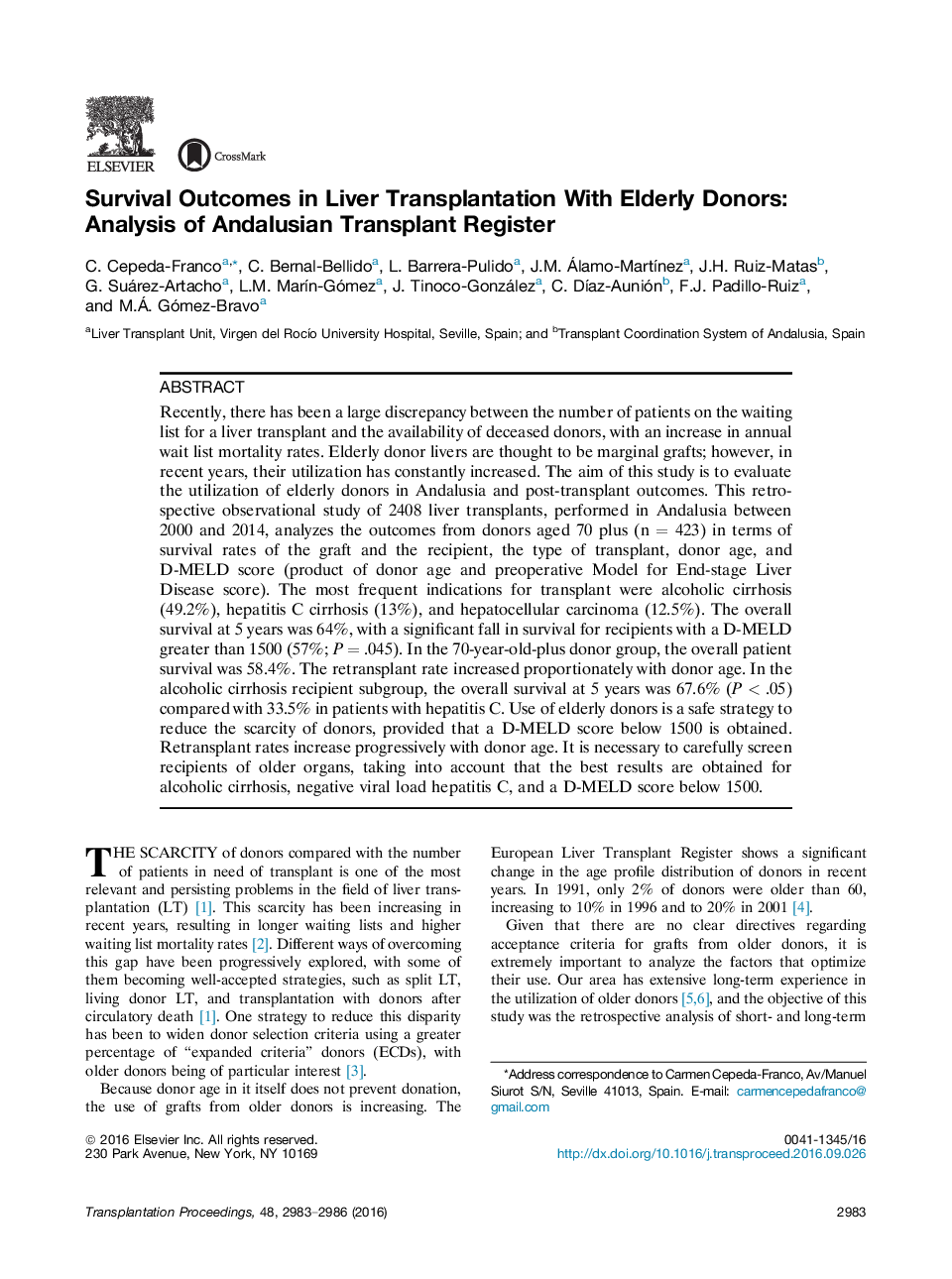| کد مقاله | کد نشریه | سال انتشار | مقاله انگلیسی | نسخه تمام متن |
|---|---|---|---|---|
| 5729010 | 1411674 | 2016 | 4 صفحه PDF | دانلود رایگان |
- Aged donors are safe to use.
- Retransplant rates increase.
- Best results are with alcoholic, non-HCV, and D-MELDÂ <Â 1500.
Recently, there has been a large discrepancy between the number of patients on the waiting list for a liver transplant and the availability of deceased donors, with an increase in annual wait list mortality rates. Elderly donor livers are thought to be marginal grafts; however, in recent years, their utilization has constantly increased. The aim of this study is to evaluate the utilization of elderly donors in Andalusia and post-transplant outcomes. This retrospective observational study of 2408 liver transplants, performed in Andalusia between 2000 and 2014, analyzes the outcomes from donors aged 70 plus (n = 423) in terms of survival rates of the graft and the recipient, the type of transplant, donor age, and D-MELD score (product of donor age and preoperative Model for End-stage Liver Disease score). The most frequent indications for transplant were alcoholic cirrhosis (49.2%), hepatitis C cirrhosis (13%), and hepatocellular carcinoma (12.5%). The overall survival at 5 years was 64%, with a significant fall in survival for recipients with a D-MELD greater than 1500 (57%; P = .045). In the 70-year-old-plus donor group, the overall patient survival was 58.4%. The retransplant rate increased proportionately with donor age. In the alcoholic cirrhosis recipient subgroup, the overall survival at 5 years was 67.6% (P < .05) compared with 33.5% in patients with hepatitis C. Use of elderly donors is a safe strategy to reduce the scarcity of donors, provided that a D-MELD score below 1500 is obtained. Retransplant rates increase progressively with donor age. It is necessary to carefully screen recipients of older organs, taking into account that the best results are obtained for alcoholic cirrhosis, negative viral load hepatitis C, and a D-MELD score below 1500.
Journal: Transplantation Proceedings - Volume 48, Issue 9, November 2016, Pages 2983-2986
